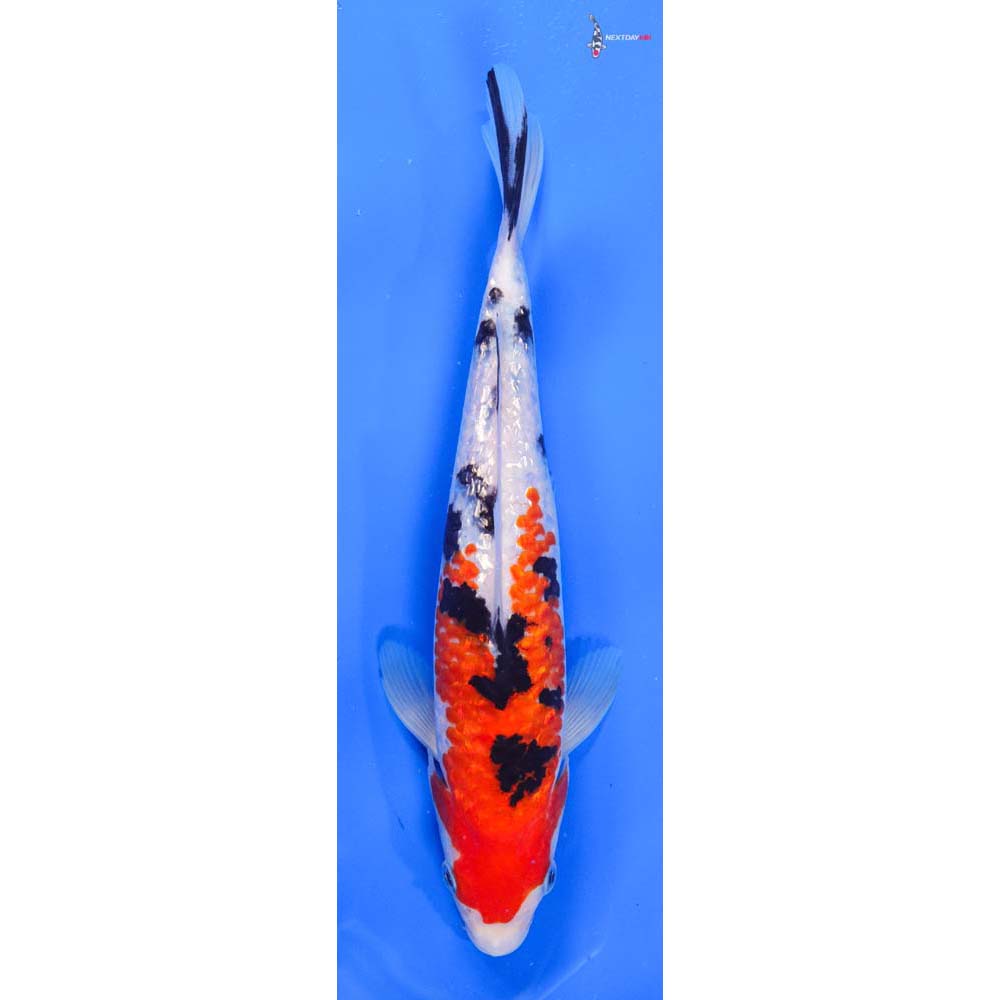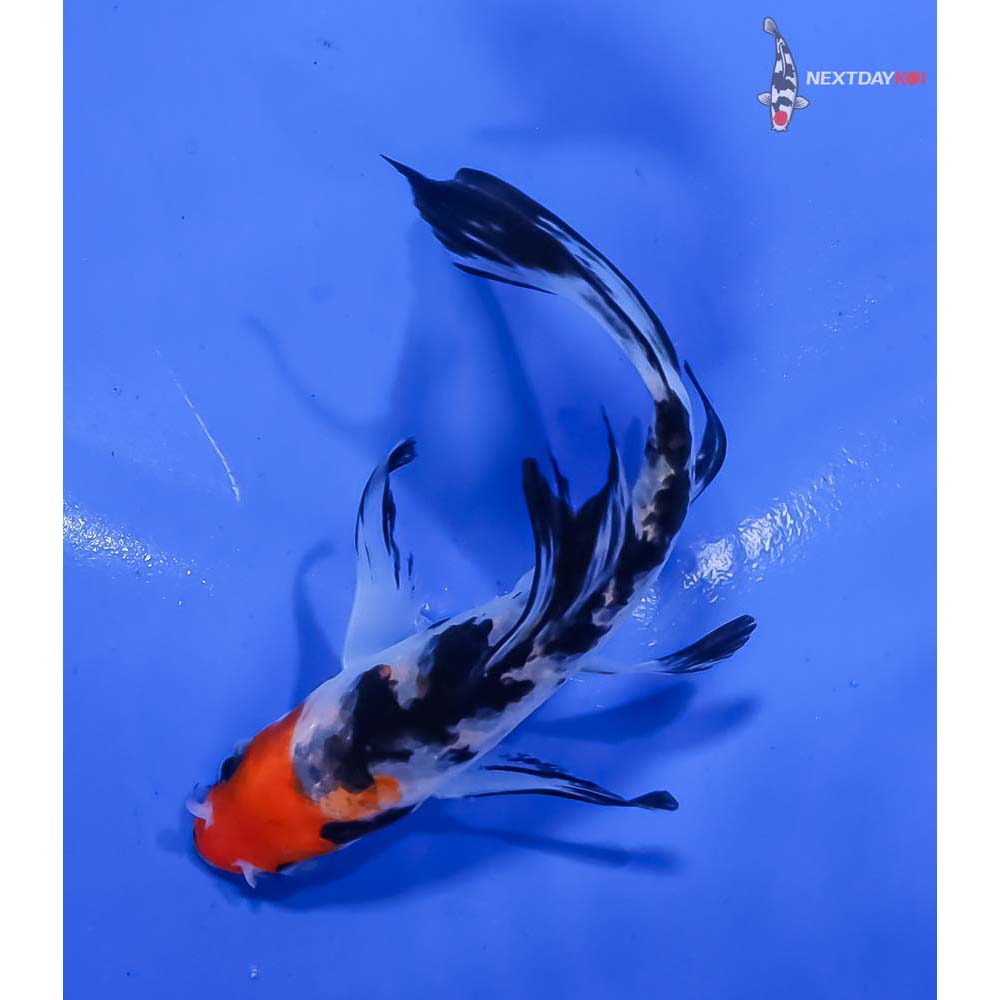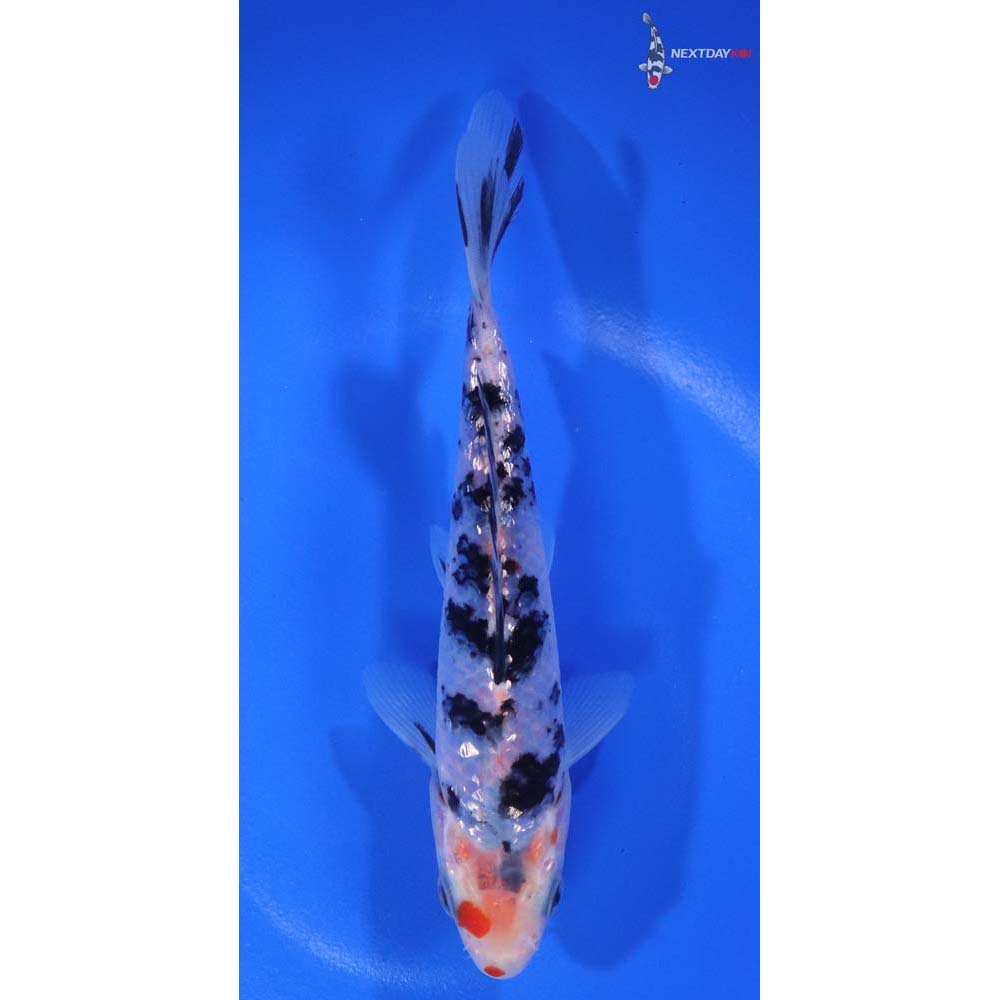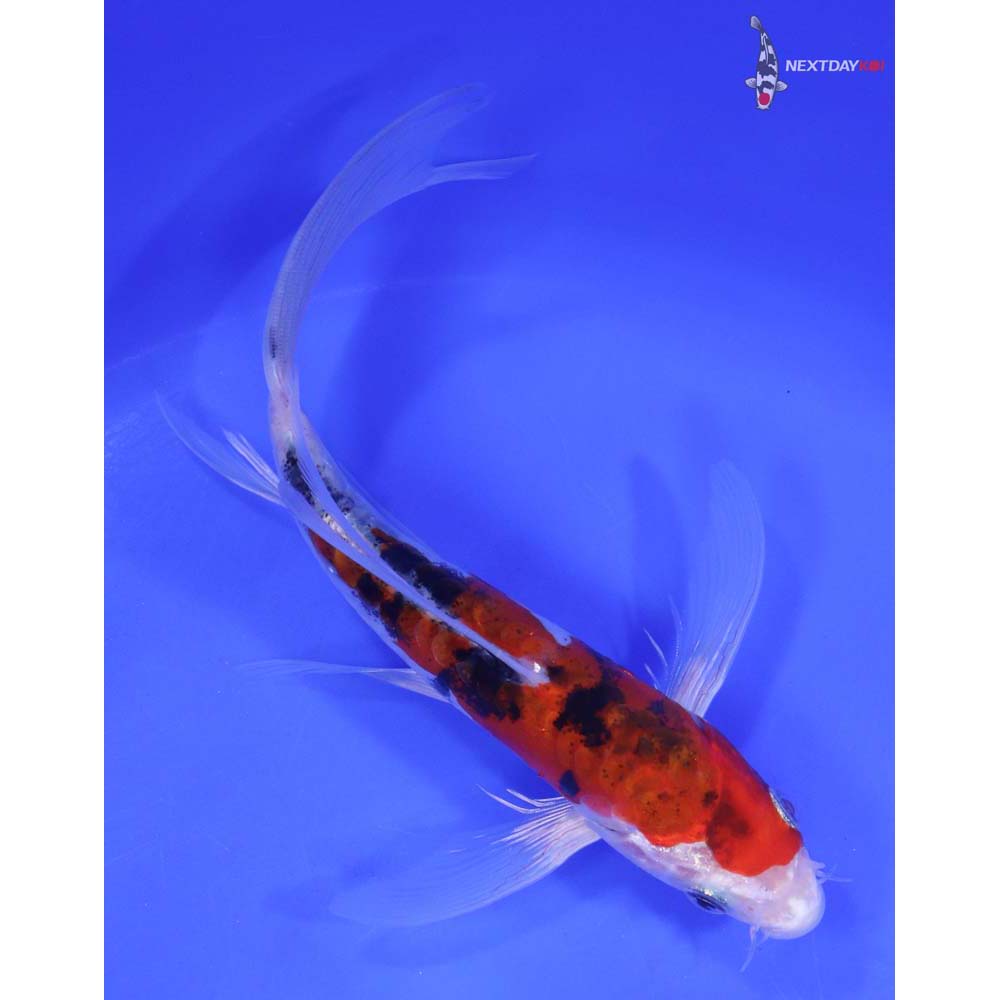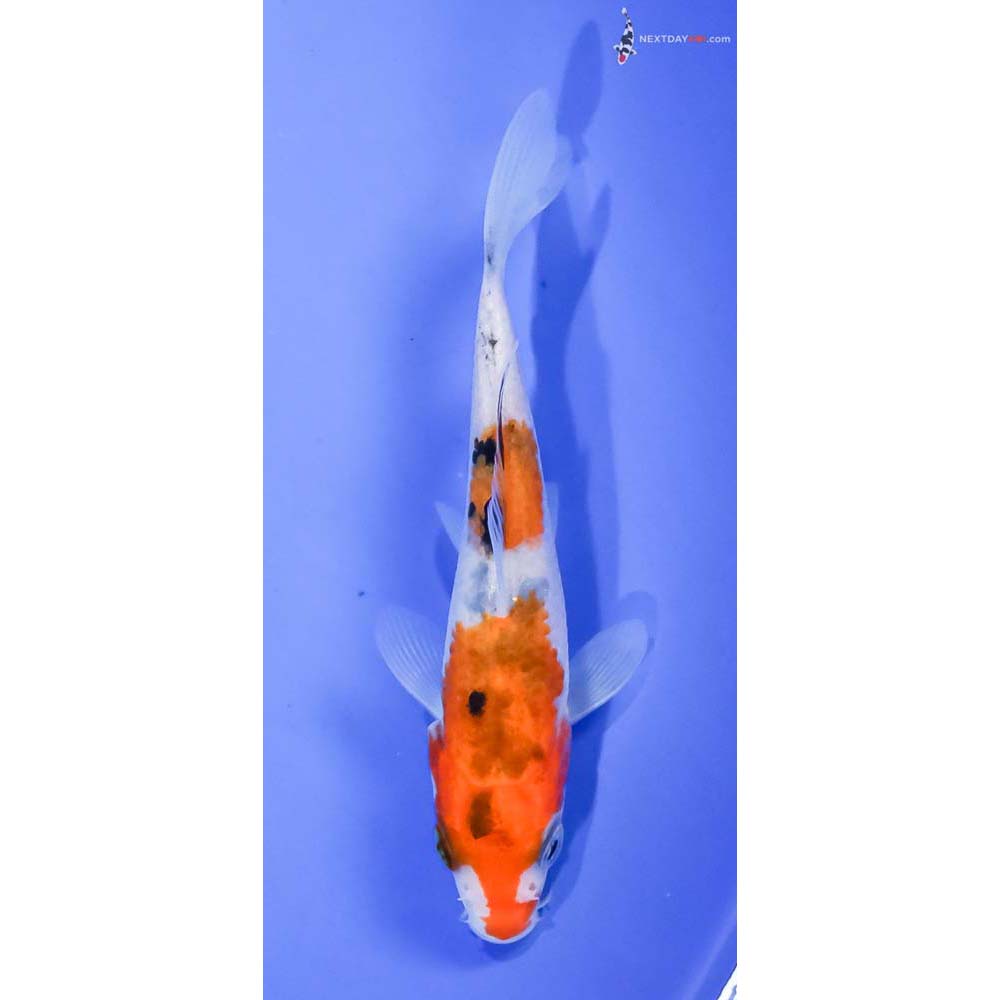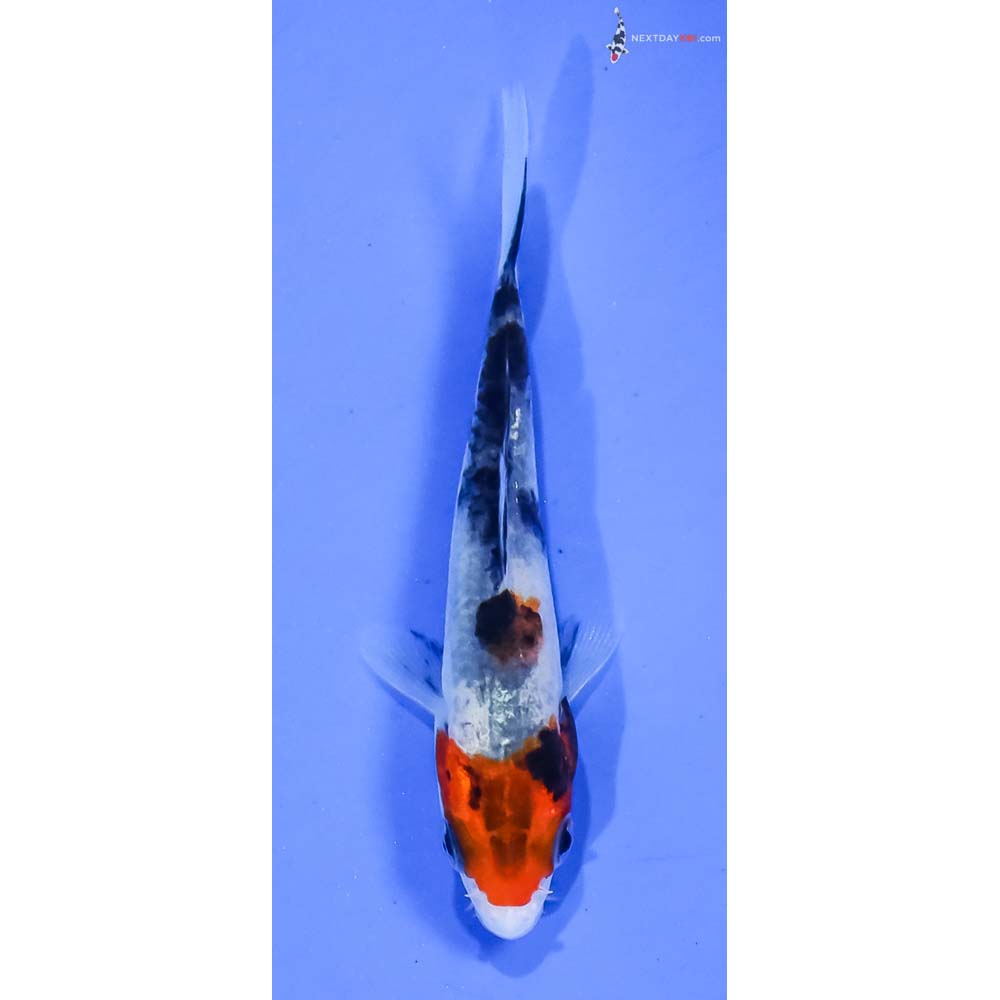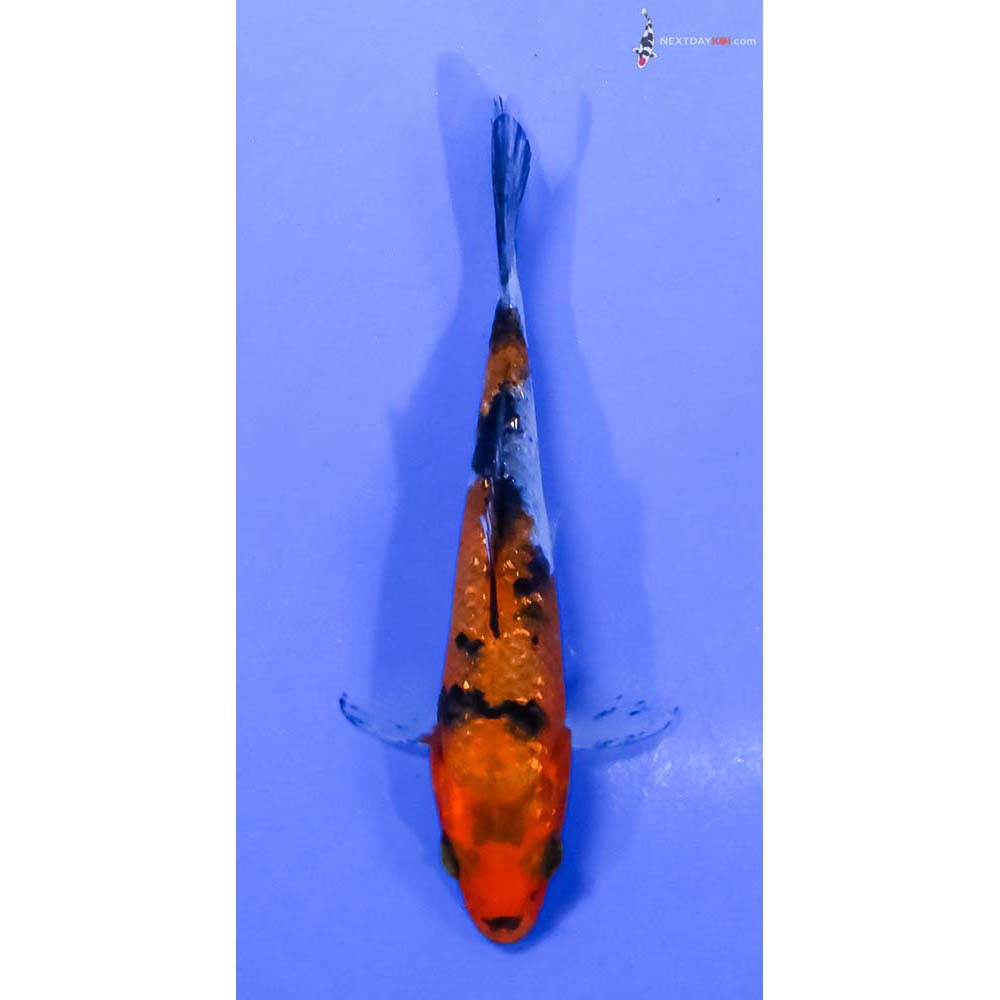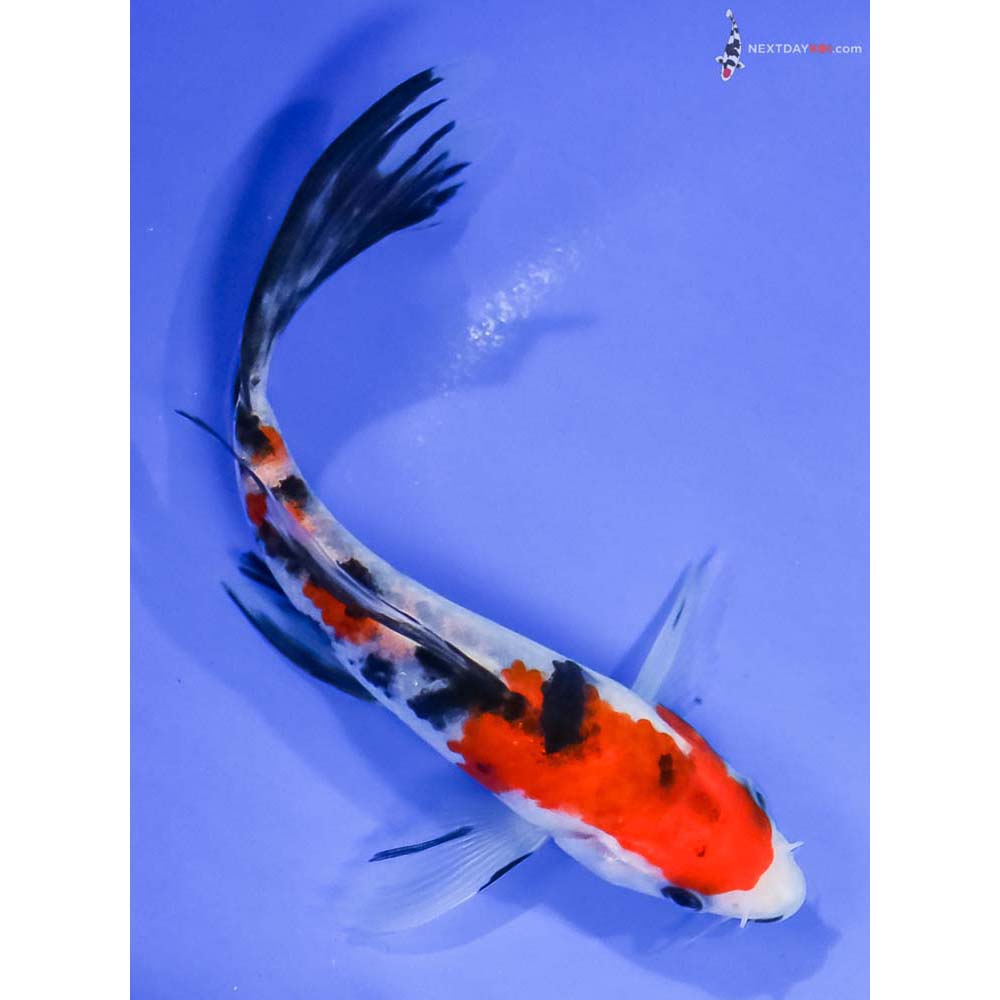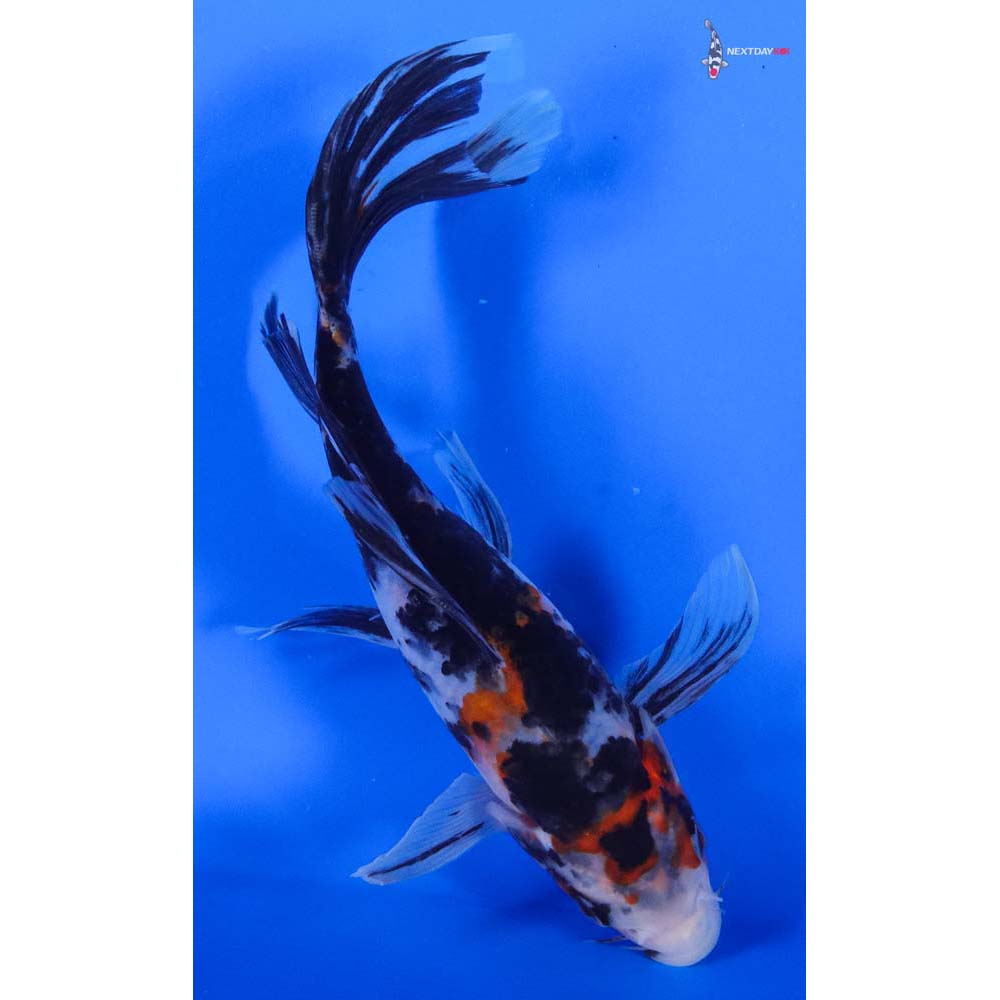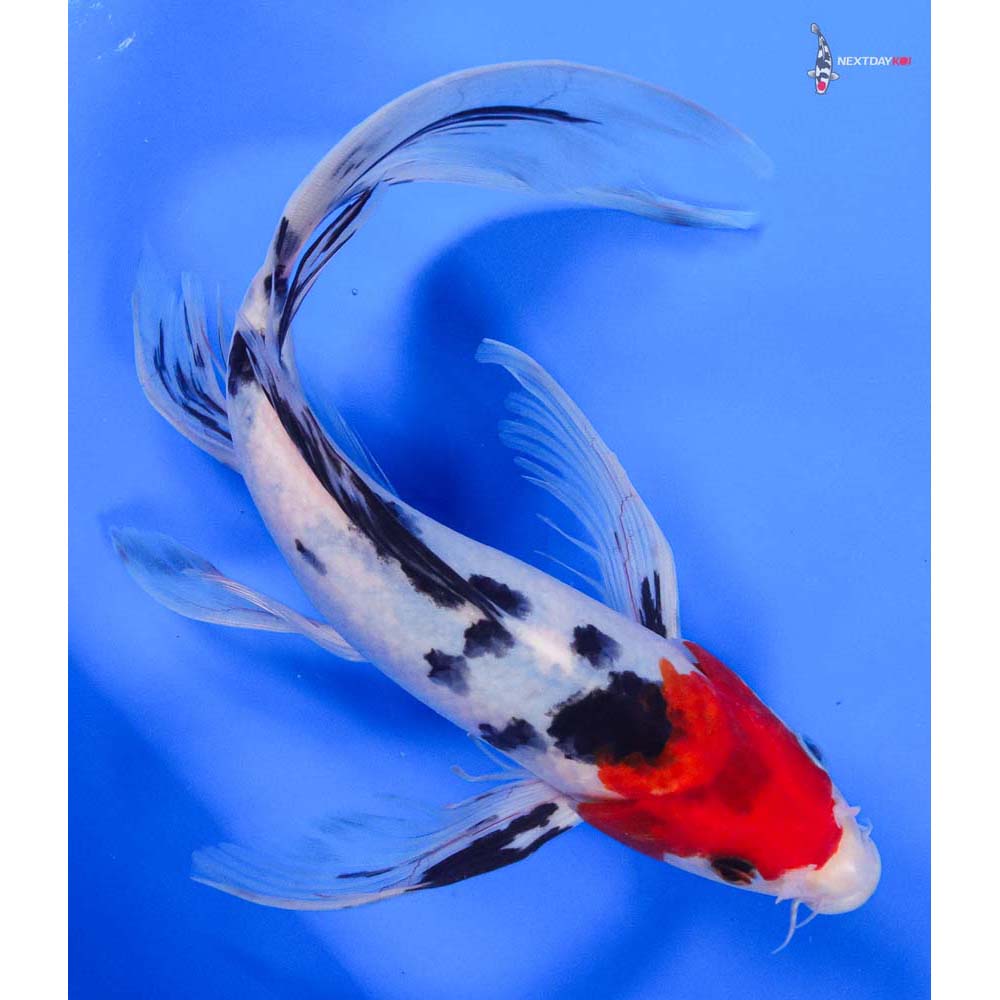The word “Taisho” in the long-form name refers to the period of Japanese history when the Sanke first appeared. While the exact date which Sanke first appeared is disputed, it is known that a Sanke was displayed at the 1914 Tokyo Exhibition. Since this koi was approximately 15 years old at the time of the show, it is widely accepted that Sanke were first bred sometime around the turn of the 19th century.
It is not known if the first Sanke were intentionally bred. Some of the first Sanke in recorded history were found in Ojiya City, Niigata. These Sanke, which were found among Kohaku fry, were cross-bred with Shiro Bekko to produce the Torazo bloodline, one of the first distinct Sanke bloodlines. Most Sanke in the koi industry today can be traced back to the Torazo bloodline.
What To Look For
Sanke have a solid white body, with areas of red and black overlaying the white body. The white should have a snowy or milky-white color, and should be clear and unblemished. A yellow tint to the white area is considered undesirable. Look for a dark shade of red that is even in tone. Ideally, the black should be a deep, solid, lacquer-like color. The hue and shade of the red and black should be uniform in all areas, with both colors evenly distributed about the body, and not confined to one side or one end of the body. The edges between the white, red and black should be sharp and well-defined.









